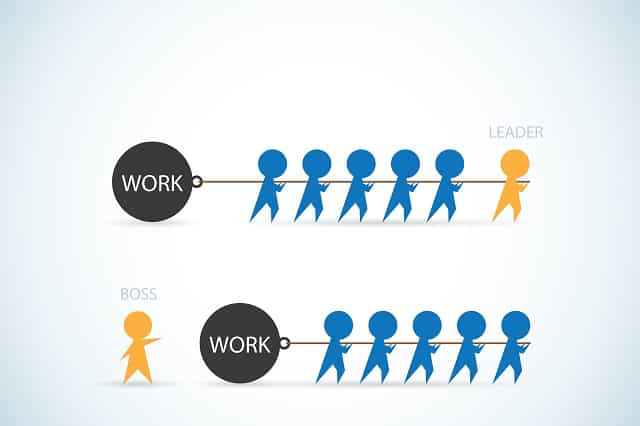How to Use Language as a Powerful Leadership Communication Tool (5.5min read)

Leaders use communication at all times with every person, inside and outside their business, regardless of what they say or do. As the most visible member of the organization, leaders and all elements of their communication are closely scrutinized. If this is the case, isn’t it better for leaders to be conscious of their communications and structure their language intentionally to maximize the impact that they want to achieve?

Clear Communication = Clear Leadership
Many breakdowns in communication come as a result of making assumptions, acting on what was heard rather than what was said and being unable to compromise on the individual needs in the situation. At Pinnacle Pursuits, we use a tried and tested model for resolving communication issues. The model has levels of complexity that cannot be fully covered in one blog but there are some gold nuggets of advice that can be shared:
Things to think of…
- Avoid making assumptions. We use assumptions to fill the missing piece of information that we need to make a decision. We will often find that this is the starting point at which many miscommunications occur. Eg. Person 1: “I didn’t know we would be discussing this, I assumed it was just a check-in meeting?” Person 2: “It was on the agenda, I assumed you had read it.” This could be where the expression ‘there are no stupid questions’ comes from because if you know all the information, you won’t make any assumptions.
- Use ‘I’ statements. Focus on what facts and feelings are concrete to you as opposed to projecting onto others. This allows you to speak from personal experience, take deliberate ownership of the subject matter and thereby create a more personal connection to those listening. Share your emotions and try and keep it to three words e.g “I feel _____”. Avoid saying ‘that’ after this sentence; otherwise it becomes an assumption and/or a projection.
- Use ‘and’ rather than ‘but’ when offering criticism. We are hardwired to forget anything that was said before ‘but’ and only remember the negative that was said afterwards. Using ‘and’ will help mitigate this and make your feedback feel truly constructive.
- Always add what you are willing to commit to (e.g time, resources, learning) in order to get what you want from a communication issue. This may require some level of compromise. The goal here is also to take responsibility and prove it takes two to commit to a mutual understanding and thus ultimately an agreement.
- Avoid using the words Don’t, Not and No. When we use these terms we aren’t being fully clear in clarifying our needs. Imagine someone asking you the question “What do you really want?” every time you use any of those words in a statement (e.g “Don’t sit there”). You would be forced to revise your statement to be much more specific (e.g “Please sit here”) so it is beneficial to practice this from the outset.
For more information on our in person and virtual communication workshops please give us a call or email our team at info@pinnaclepursuits.com.

Boss’ Orders vs Leader’s Request
“Remember the difference between a boss and a leader; a boss says ‘Go!’ – a leader says ‘Let’s go!” – E.M. Kelly
There are lots of adjustments to your language you can easily implement that will distinguish you as a leader, rather than a boss. Smart leaders inspire with trust, enthusiasm and empathy, and display confidence in their employees to make decisions on their own.
- Leaders will also use ‘We’ when talking about individual efforts rather than ‘I’ or ‘You’. This subtly reinforces that he / she is accountable to successes and failures and that everyone is in ‘it’ together.
- Leaders will ask rather than command. This is the difference between asking “Could we get this finished today?” over “You need to finish this”. This shift shows you are not relying on power to get results.
- Leaders will always be modest in success and distribute praise to their team rather than take it all themselves. “We did a great job. This was a real team effort so thank you to everyone involved”.
Giving Praise
Giving praise is the best gift that you can give to your colleagues and employees. Human beings are pack animals. We have a sociological desire to belong to a group and receive the praise of those within that group. Work is a group, and the leader is the alpha. When giving praise, give all of the compliments e.g “Awesome job, great work, fantastic result” and cement it all with acknowledgement and applaud the time/energy that was put in: “Thank you for working on this. I really appreciate it.” This kind of language will always make your colleagues and employees feel more validated and their effort recognized, spurring them on to continue working hard. If you do need to give criticism, try modelling it on the 5:1 ratio; 5 pieces of praise for each criticism. This affirms that your intention is to build up rather than put down.
Body Language
As our species has developed, we have learned how to read body language in order to aid our survival. When conversing with someone, our brain is subconsciously assessing their credibility, trustworthiness and confidence all through their physical actions. Our use of space, gestures, posture, facial expressions and eye contact can strengthen, weaken or sabotage anything that we are saying. It is good to be aware of some of our habits. Next time you have a conversation, try to do the following:
- Ensure you have free hands – Something as simple as holding an object in your hand (such as a phone) suggests that this object is more important than the discussion you are having at that moment.
- Maintain eye contact – avoiding eye contact with someone when in a conversation can suggest that you are looking for something better to engage in.
- Relax your stare – Before a conversation take a minute to check in and see if you are holding tension in your face. This will help you avoid scowling in concentration which can often suggest ‘keep away’.
- Keep your hands seen at all times – we tend not to trust someone who has their hands hidden. This is a nonverbal sign that is deeply ingrained in our subconscious and leads back to the survival instincts of our ancestors.
- Smile – this is the quickest and most effective way to tell others that you are friendly and approachable. If you’re meeting someone for the first time do a quick ‘attitude check’ so you know if your smile is genuine.
- Be on the lookout for future blogs that will dive further into the chemistry of body language.
In Conclusion…
Hopefully this blog will help you be more conscious of the communication styles. We also hope to have provided with some tools and knowledge that you can use to elevate your leadership language. True leaders rarely stop being leaders so be sure to practice as much and often as possible with all of your interactions. Do you have any tips on how your language and communication methods can improve leadership? Let us know in the comments below.
